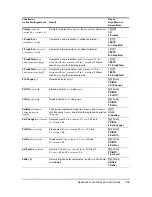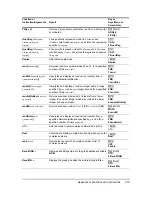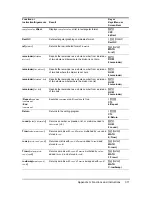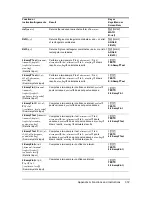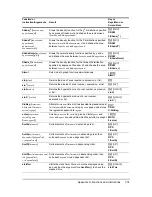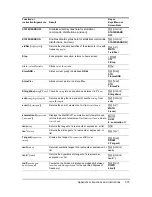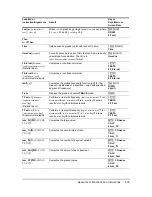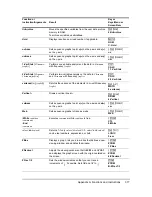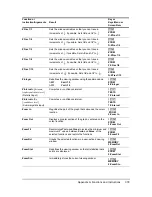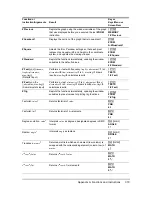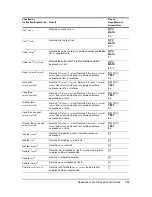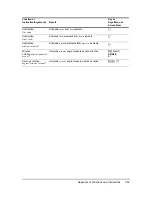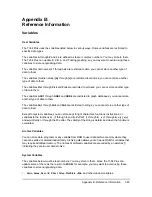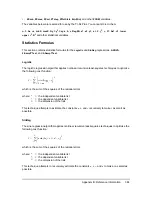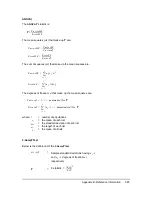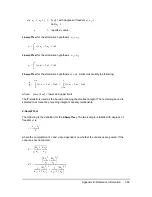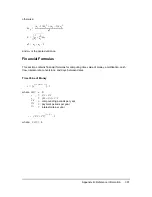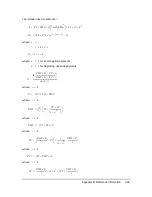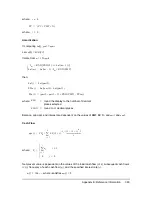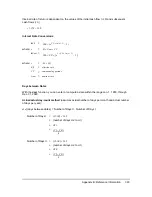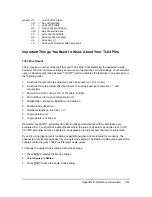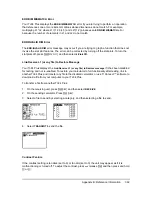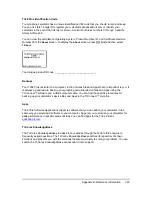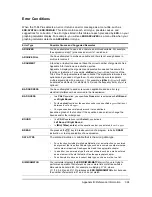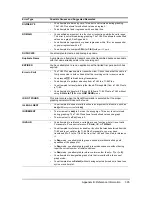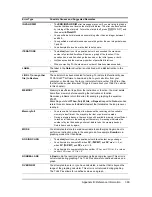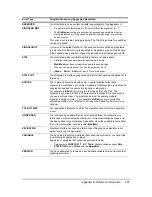
Appendix B: Reference Information
383
Appendix B:
Reference Information
Variables
User Variables
The TI-84 Plus uses the variables listed below in various ways. Some variables are restricted to
specific data types.
The variables
A
through
Z
and
q
are defined as real or complex numbers. You may store to them.
The TI-84 Plus can update
X
,
Y
,
R
,
q
, and
T
during graphing, so you may want to avoid using these
variables to store nongraphing data.
The variables (list names)
L1
through
L6
are restricted to lists; you cannot store another type of
data to them.
The variables (matrix names)
[A]
through
[J]
are restricted to matrices; you cannot store another
type of data to them.
The variables
Pic1
through
Pic9
and
Pic0
are restricted to pictures; you cannot store another type
of data to them.
The variables
GDB1
through
GDB9
and
GDB0
are restricted to graph databases; you cannot store
another type of data to them.
The variables
Str1
through
Str9
and
Str0
are restricted to strings; you cannot store another type of
data to them.
Except for system variables, you can store any string of characters, functions, instructions, or
variables to the functions
Y
n
, (
1
through
9
, and
0
),
X
n
T
/
Y
n
T
(
1
through
6
),
r
n
(
1
through
6
),
u(
n
)
,
v(
n
)
,
and
w(
n
)
directly or through the
Y=
editor. The validity of the string is determined when the function is
evaluated.
Archive Variables
You can store data, programs or any variable from RAM to user data archive memory where they
cannot be edited or deleted inadvertently. Archiving also allows you to free up RAM for variables that
may require additional memory. The names of archived variables are preceded by an asterisk (*)
indicating they are in user data archive.
System Variables
The variables below must be real numbers. You may store to them. Since the TI-84 Plus can
update some of them, as the result of a
ZOOM
, for example, you may want to avoid using these
variables to store nongraphing data.
•
Xmin
,
Xmax
,
Xscl
,
@
X
,
XFact
,
Tstep
,
PlotStart
,
n
Min
, and other window variables.

